
Loading...

Loading...
2025-05-14
Antara
Senior safety in care homes requires urgent attention as an older person is admitted to the emergency room every 15 seconds because of fall-related injuries. Falls remain the leading reason of injury for older adults, highlighting the critical need for comprehensive safety measures in senior care environments. These statistics reveal only part of the broader safety challenges facing elderly residents in care facilities.
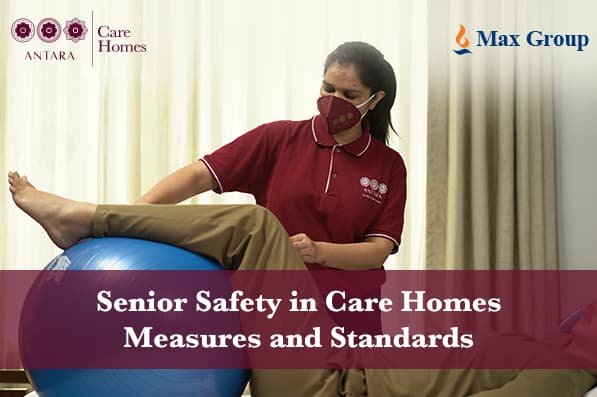
The reality of senior care home operations presents additional concerns for senior safety beyond physical injuries, including medication errors or feeling neglected without frequent check-ins.
Safety within senior care homes involves much more than simply preventing physical injuries. In care settings, safety broadly refers to the absence of preventable harm and minimising unnecessary risks across multiple dimensions.
A comprehensive approach recognises that safety encompasses a resident's entire well-being—physical, psychological, social, and even spiritual needs.
While falls remain a serious concern in senior care homes, safety extends far beyond preventing physical injuries. Research shows that common types of physical harm in care homes include not only fall injuries but also dehydration, pressure ulcers, infections, and medication-related problems. Moreover, residents may experience psychological harm when care practices fail to respect personal dignity.
A holistic approach to safety addresses:
Indeed, focusing solely on physical safety measures may overlook equally essential aspects of resident well-being.
Care homes present unique safety challenges compared to hospitals. Most importantly, care homes are places where people live, not just receive treatment. This creates a fundamental tension between creating a homely environment and ensuring protection from harm.
Unlike hospitals which provide constant supervision, care homes provide intermittent professional oversight, with residents often receiving assistance from family members or professional staff as much as they demand or require.
Balancing safety with dignity and independence represents the greatest challenge in senior care homes. This balance hinges on two crucial principles: duty of care and dignity of risk. The former involves the facility's obligation to protect residents, while the latter recognises seniors' right to make choices even when those choices involve certain risks.
Research indicates that allowing seniors to maintain autonomy significantly improves their mental health, sense of purpose, and overall quality of life. Taking measured risks remains an essential part of personal growth and well-being regardless of age.
Studies show that seniors who maintain independence experience less stress and anxiety as they don't feel overly controlled in their living environment. Therefore, effective safety approaches in care homes must protect residents while simultaneously preserving their autonomy and personal dignity.

Proper implementation of safety measures forms the foundation of quality care for seniors in residential facilities. Care homes must adopt comprehensive approaches that address both physical hazards and psychological well-being, creating environments where older adults can thrive safely.
Fall prevention remains crucial in care homes. More than one in four people aged 65 or older falls annually, and the risk increases with age. Effective fall prevention starts with environmental modifications like installing grab bars in bathrooms, using non-slip flooring, and ensuring pathways remain clear of obstacles. Regular exercise programmes specifically improve balance and strength, making falls less likely even as mobility changes.
Care homes should provide appropriate mobility aids tailored to each resident's needs. These might include canes, walkers, wheelchairs, or other specialised equipment that supports independence while reducing fall risk. Additionally, staff must receive proper training on assisting residents with mobility challenges.
Emergency response systems enable immediate action during medical crises or accidents. Every care home should maintain a well-defined emergency response team consisting of nursing staff, administrators, and other personnel who coordinate during emergencies. These systems typically include personal emergency response devices, allowing residents to call for help instantly when needed.
Medication errors present serious risks in Care homes. Effective medication management involves several critical components:
Care homes should establish protocols for timely reordering, accurate dosing, and monitoring potential drug interactions to enhance the safety of senior residents.
Mental health support proves essential for older adults in care settings. Many older people experience social isolation and loneliness—key risk factors for mental health conditions. Care homes should implement:
Effective access control systems prevent unauthorised entry while managing resident movement. This balance particularly matters for residents with conditions like dementia who may wander. To prevent this, Care facilities generally follow:
Maintaining high hygiene standards prevents infections in senior care environments. Standard Infection Control Precautions (SICPs) should be consistently applied, including proper hand hygiene, respiratory hygiene, appropriate use of personal protective equipment, & safe management of the care environment. Facilities must establish clear cleaning protocols and ensure staff receive regular training on infection prevention.
Senior safety in care homes demands a holistic approach that extends far beyond simply preventing falls. After all, creating truly safe environments requires attention to the physical, psychological, social, and cultural dimensions of resident well-being. Care homes face unique challenges compared to hospitals because they serve as actual homes where seniors should feel comfortable while remaining protected from preventable harm.
Balance clearly emerges as the central theme when addressing senior safety. Care facilities must protect residents while respecting their dignity and independence. This dual responsibility shapes every aspect of care home operations while respecting resident preferences.
Care home operators, staff, and families work together to develop personalised safety plans that reflect each resident's unique needs and preferences. While standardised safety measures provide essential protection, they must adapt to individual circumstances.
Care homes that successfully implement comprehensive safety measures while honouring resident autonomy create environments where seniors thrive rather than merely survive. Their approach acknowledges that feeling safe involves both physical protection and psychological security. Future improvements in care home standards should focus on this balanced approach, recognising that true safety emerges when residents feel both protected and respected.
Personalised home care for seniors offers compassionate, tailored support that aligns with their unique health needs, routines, and preferences. It not only includes medical assistance, personal care, and companionship but also ensures the dignity, comfort, and independence of senior residents.
Personalised care positively impacts a senior's well-being, as it:
Yes, personalised home care can include a wide range of medical services, such as:
To create a customised care plan for your elderly parent, start by understanding their unique health, emotional, and lifestyle needs. Discuss openly with their doctors to address medical issues and design a daily routine that aligns with their preferences, hobbies, and physical necessities. Ensure their comfort, independence, and dignity are maintained at all times by involving them in decision-making, making sure they feel heard and respected in every aspect of their care.
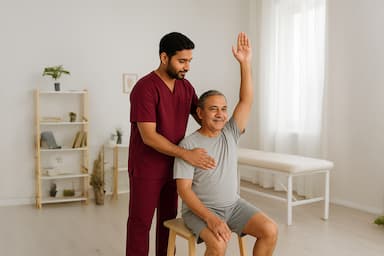
Why Antara Senior Care is Making Post-Op Recovery Easier in ...
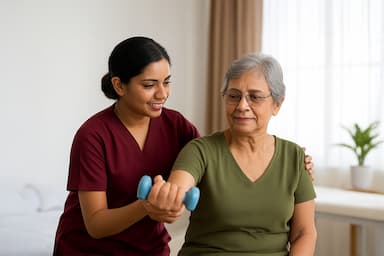
Physiotherapy vs. Physical Therapy: What’s the Difference?
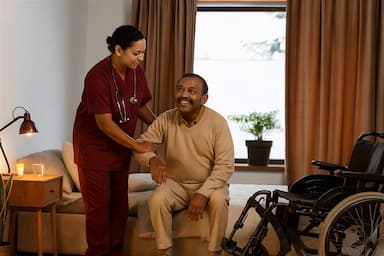
Palliative Care for Cancer: Managing Pain & Emotions
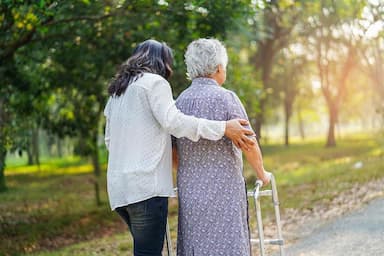
Palliative Care: Providing Comfort When It Matters Most

Importance of Home Care Services in Post-Surgery for Elders

Please fill in the form and submit the details to request an appointment.